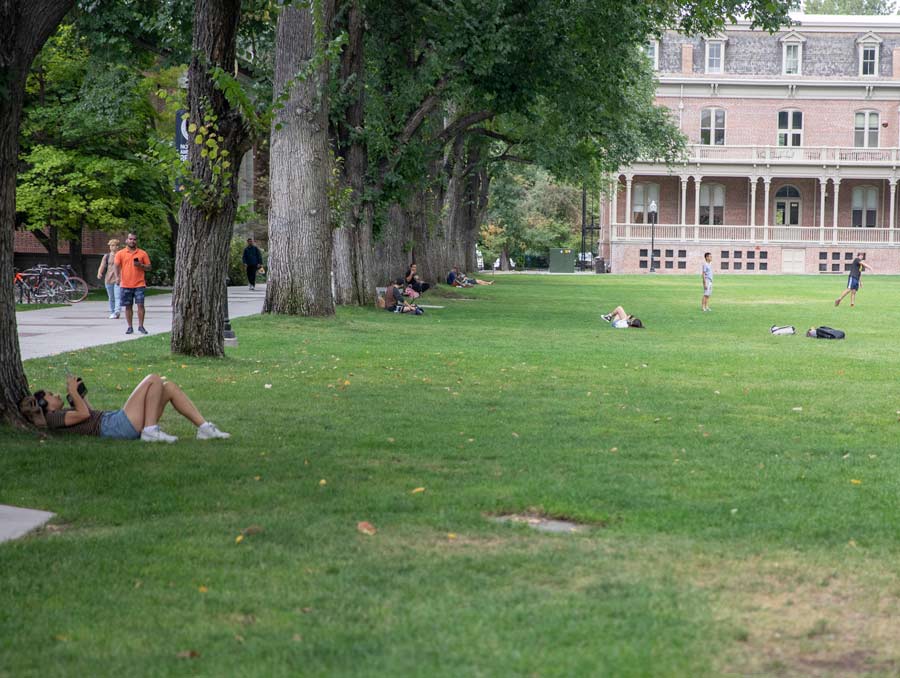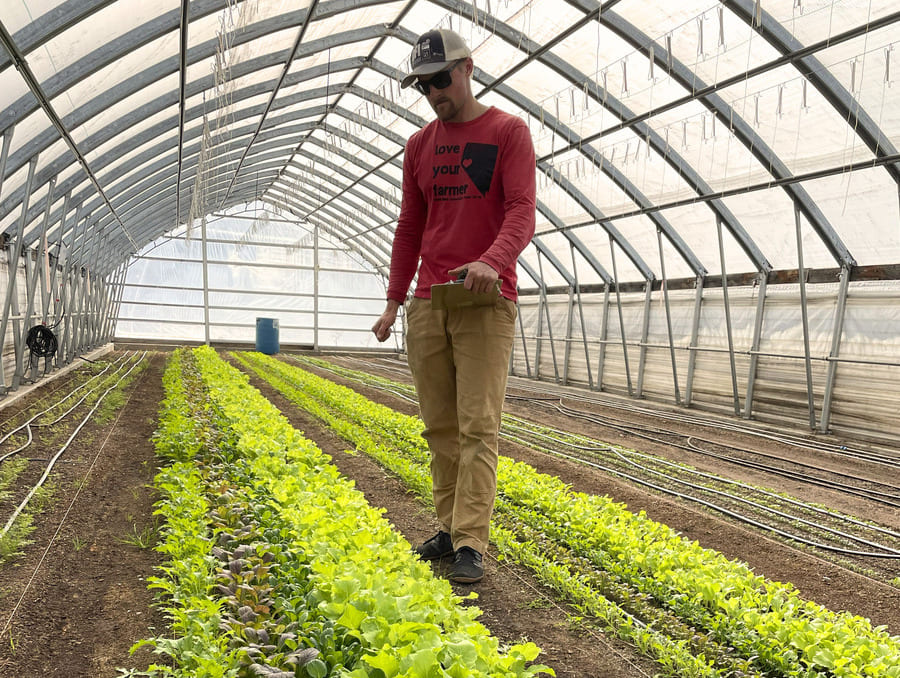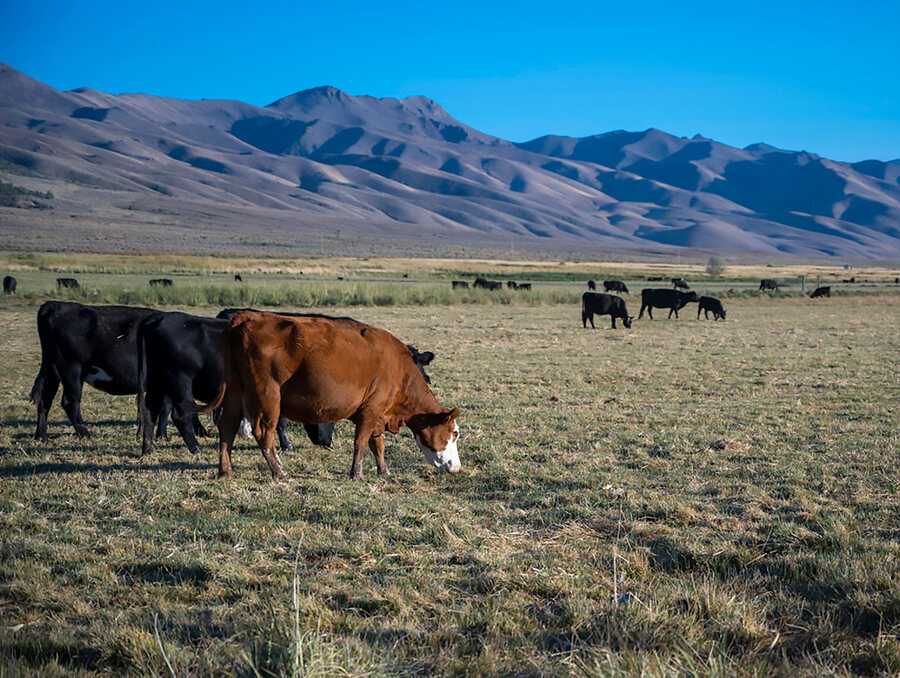Klaire Rhodes is a graduate student working in the Nevada State Climate Office with Associate Professor in the Department of Geography Thomas Albright. Albright is serving as Interim Nevada State Climatologist. Rhodes and Albright recently published an update about Nevada’s drought, which was shared through the Living With Drought program and is published below. Living with Drought is a collaborative program that provides information to help Nevadans prepare for, respond to and recover from drought.
Thanks to August monsoons over southern Nevada, the Silver State has no counties under Drought Watch for the first time since February 2020!
Current drought conditions in Nevada and across the West
Exceeding our expectations, drought conditions have continued to improve over the last month, with the patch of persistent drought in the southern tip of the state dwindling down enough to get Clark County out of Drought Watch, with only 21% of the county in D1-Moderate Drought.
During August, areas of Nye and Lincoln counties improved up to two classes, while that particularly stubborn piece of D0-Abnormally Dry to D1-Moderate Drought clings on for now in parts of Clark and Lincoln counties. As we head into September, over 94% of the state is drought-free, which is the largest percentage of zero drought that we've seen in three and a half years. At the end of August last year, over 50% of the state was in D3-Extreme Drought.
Across the western U.S., some states followed Nevada's trend of improved drought conditions, including parts of California, Utah, Wyoming, and Idaho. The hydrologic Great Basin is almost entirely drought-free, except for a stubborn area of central Utah. Other states were less lucky, with lingering or worsening drought conditions in areas of Oregon, Washington, Montana, Colorado, Arizona, and New Mexico. Notably, small areas of New Mexico, Washington, and Montana have found themselves in D3-Extreme Drought going into autumn.
August temperature and precipitation
Despite a hotter-than-normal July, August brought a return to normal or even cooler-than-normal temperatures over most of Nevada. Large swaths of the state flirted with temperatures 1° to 2°F cooler than normal, with only isolated parts of northern Nevada seeing slightly warmer-than-normal temperatures. Consistent with this, August did not generally bring us record-breaking temperatures. For example, Winnemucca and Las Vegas both stayed mostly within their expected temperature ranges. In Las Vegas temperatures trended upward during the last two weeks of August, though steering clear of record territory. The end of the summer also brought above average levels of precipitation to most of the state, with most counties experiencing well above normal precipitation levels for the month. In one of the drier months in the driest state this only amounts to between 0.5” to 3” of rain, but it is still meaningful. As we mentioned last month, the monsoon season in southern Nevada made a late appearance, but Las Vegas area residents will agree that when it did arrive, it arrived in dramatic fashion, bringing over an inch of rain on August 25th and signaling flash flood warnings in parts of Clark County. Abundant precipitation wasn't only isolated to the south, however, as "Burners" faced heavy rainfall on the Black Rock Desert at the very end of the month into Labor Day weekend, putting a muddy end to their festival experiences.
Soil moisture
Unsurprisingly, above average precipitation in August lead to well above average topsoil moisture nearly everywhere in the state. Compared to the dry map we looked at the end of July, the difference is striking. Subsoil conditions also became damper, but being more responsive to longer term weather conditions, in a less pronounced way than topsoil moisture.
Water resources
Preliminary data suggests that water levels in most Nevada reservoirs are at or well above their normal capacity. Notably, data is currently unavailable for Lake Mead and Lake Tahoe in the NRCS update report. The Bureau of Reclamation's Lake Mead 24-month study, however, tells us that despite the slow rise in lake levels over the year, projections don't point toward getting out of that Level 1 Shortage Condition any time soon. Similar to last month, most stream gauges are reporting normal to much-above-normal flows, especially near the Sierra Nevada range where many snow patches lingered late into the summer.
Looking forward
The seasonal temperature outlook suggests that temperatures are leaning towards being warmer than normal across most of the western U.S. Here in Nevada the outlook gives us a 40-50% chance of being warmer than normal.
The precipitation outlook is largely inconclusive, with equal chances of being above or below normal. Last month we said that drought conditions in southern Nevada were unlikely to improve in the coming months, but the updated outlook now indicates that the persistent patch of drought in that corner of the state is likely to dissipate. Other areas of the west could be less lucky, namely with drought in Oregon, Washington, Colorado, and New Mexico that is expected to persist or develop. The fire season has been mostly uneventful in our neck of the woods, but time will tell if we can make it through the fall. The 3-month Wildland Fire Potential outlook looks pretty promising for Nevada, with normal levels of fire potential across the state. With that being said, pay attention to the elevated areas of fire potential in northern California and the Pacific Northwest. Existing and potential fires in those areas could still affect our state in the form of poor air quality.
Special note: With no county in Nevada currently under drought watch, this will be our last monthly Drought Update until at least one county creeps back into having 50% of its area under a D1 Moderate Drought condition or worse.














